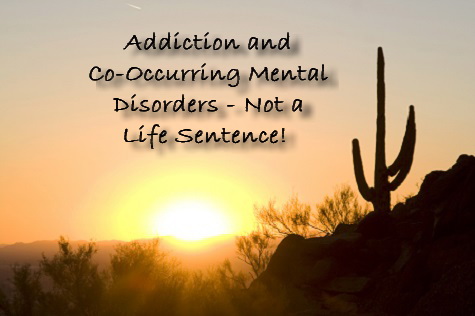13 Jan 2014
Demi Lovato’s Battle With Addiction And Mental Illness – How Her Candid Story Can Help Teens
Actress and singer Demi Lovato has made a name for herself starring in television shows like The X-Factor and Sonny With A Chance. However, recently the 21-year-old star has been promoting her new memoir, Staying Strong: 365 Days a Year. The book details the young celebrity’s battles with several mental health conditions, including a drug addiction, eating disorder and alcohol abuse.
Lovato’s Personal Struggles
In her memoir and through a series of interviews, Lovato revealed her disorders as well as her triumphs. They include the following:
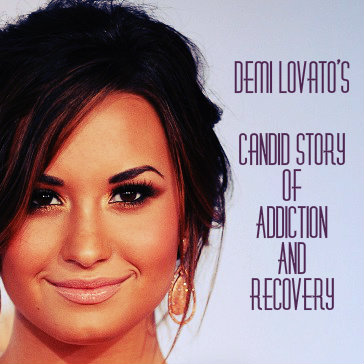 Drug addiction – The star has recounted how, during the peak of her addiction, she snorted cocaine practically every 30-60 minutes.
Drug addiction – The star has recounted how, during the peak of her addiction, she snorted cocaine practically every 30-60 minutes.- Alcohol abuse – Lovato reports that by age 19 her alcohol abuse was serious enough that she was drinking a soda bottle filled with vodka in the morning.
- Cutting – She’s spoken openly about her struggle with self-mutilation, which began at the tender age of 11. Lovato says she made cuts on her wrists to cope with negative emotions.
- Eating disorder – The young celebrity recalls how she first battled an eating disorder around age 12 or 13, although she began to worry about her body image earlier. This was triggered by becoming the target of bullies who cruelly labeled her as “fat.” Over the years, her self-destructive behaviors included compulsive overeating as well as anorexia and bulimia.
- Bipolar disorder – Lovato recounts how, initially, manic periods made her a productive songwriter. However, the cycles of mania and depression also made it painfully difficult for her to control her emotions.
By age 19, these conditions had taken a serious toll on Lovato’s well-being. She reports having a nervous breakdown during a concert tour. At one point, she reportedly physically struck one of her back-up dancers. That’s when her family and management team did the intervention that compelled her to quit the tour and enter into treatment. Lovato initially received three months of inpatient treatment, and then continued her treatment in an outpatient program. It was only after treatment started that she was diagnosed with bipolar disorder [1-5].
Co-Occurring Disorder – Not Unique
Mental health disorders often co-occur, creating havoc in the lives of young individuals and their families. While the scope of Lovato’s conditions may seem sensational – alcohol, drugs, cutting, depression, and mania – the reality is that some teen girls and young women deal with these challenging disorders on a daily basis.
Anorexia nervosa affects up to 3.5% of women during their lifetime, while bulimia afflicts approximately 4% of females. Over 85% of those with eating disorders report first experiencing symptoms before the age 20 [6]. Teens and young women may restrict eating habits or binge and purge for a variety of reasons, from the desire to have the “perfect” body to the need to conform to athletic standards. The impact of an eating disorder on physical and emotional health is profound. These conditions have the highest mortality rate of any mental health disorder. For example, 20% of individuals with anorexia will die early from complications such as suicide or heart problems [6].
Other psychiatric conditions, like those Lovato struggled with, also have a negative effect on adolescent girls and young women, too. Research reviews suggest that patients with bipolar disorder have higher rates of bulimia. The opposite is true as well, with bulimic patients showing elevated rates of bipolar disorder [7]. Likewise, researchers have connected eating disorders with self-injury behaviors, such as cutting. In one study, 40% of adolescents with an eating disorder engaged in some type of self-injury. Those who practiced binging and purging, in particular, were more likely to self-harm than those who restricted food intake [8].
It’s also common for young people with mental health conditions to wrestle with substance abuse, just as Lovato did. A teenager or young adult overwhelmed by negative emotions may turn to substances to self-medicate their symptoms. For instance, bipolar disorder so frequently co-occurs with drug or alcohol abuse that some experts suggest that all young people with the condition should be assessed for substance abuse [9].
Lovato’s Encouraging Turn-Around
Lovato says she’s been open about her struggles because she wants other young girls to know their lives don’t need to be destroyed by addiction and mental health issues. In addition to talking with media outlets and writing a book, Lovato has also become a contributing editor to Seventeen magazine, with a focus on addressing eating disorders and the pressure teen girls often feel to be perfect [10]. Earlier this year, she also joined the Substance Abuse and Mental Health Services Administration (SAMHSA) to promote National Children’s Mental Health Awareness Day.
The popular young star’s efforts may serve to increase awareness of these issues among teen girls and young women. For example, they may help remove some of the stigma linked to conditions like depression or bipolar disorder, making it a little easier for someone to admit she needs help. Lovato’s openness may also teach some to recognize potential mental health disorders, including substance abuse, in their friends.
Additionally, her story may spark conversation about how the drive for physical perfection affects young women. Mass media and social networks have the power to convey unrealistic expectations about appearance. For example, the recent “thigh gap” trend has raised concerns because it may be causing some teens and young women to engage in unhealthy eating behaviors. They strive to become thin enough to create a noticeable space between their upper thighs. Lovato’s struggles with her own body image and the serious impact it’s had on her well-being may help some young people re-examine how they feel about their own bodies.
Reaching Out For Mental Health And Addiction Help And Healing
If you are a young woman dealing with mental health challenges, such as depression or self-harm, or a substance abuse problem – of if you know someone who is – contact a treatment center. The staff will help you determine appropriate treatment options. In addition, you’ll learn more about the intervention process and how it works to guide a person into treatment. Reach out for help today.
Read More About News In Celebrity Addiction
Resources:
[1] http://www.accesshollywood.com/demi-lovato-reveals-i-would-smuggle-cocaine-on-planes-exclusive_article_87694?l=OrMCe04Lcp0lOAfwFxnxvTU9tcbLHGqa8dh4YNgqILhpcs3rrYzNyvjFFpL2UWFdmIyLovYOHoUw9OHNN-yfr-hT3QzJwxXaiY0E6jGOmKBd9kI-phnp10szTd5p31H3oLl4-d20JIUZB21TTGT0B8HYTWG85jaN3LpDOgDuYyeE_Ucklv4NTCPit-xOC3I
[2] http://www.foxnews.com/entertainment/2013/12/10/demi-lovato-couldnt-go-without-cocaine-for-30-minutes-to-hour/
[3] http://abcnews.go.com/Entertainment/demi-lovato-interview-teen-star-opens-bulimia-cutting/story?id=13405090
[4] http://www.people.com/people/article/0,,20483380,00.html
[5] http://www.cnn.com/2011/SHOWBIZ/celebrity.news.gossip/01/28/demi.lovato.treatment/index.html
[6] http://www.anad.org/get-information/about-eating-disorders/eating-disorders-statistics/
[7] http://www.ncbi.nlm.nih.gov/pubmed/15935230
[8] http://www.sciencedirect.com/science/article/pii/S1054139X10003095
[9] http://psychcentral.com/lib/substance-abuse-and-bipolar-disorder/0001033
[10] http://www.seventeen.com/health/tips/demi-lovato-hub
If someone you care about is beginning to find recovery in a 12-Step Program, you may find yourself with a lot of questions. Media images of 12-Step Programs are a caricature, and from the outside, we have to admit the practices look a little strange. Is this some sort of cult? Yes, you’re happy the addict is sober and getting help, but is this how it has to be?
What Are The 12 Steps All About?
The 12-Step Program was a program of recovery developed by alcoholics for alcoholics and other addicts. The program is based upon 12 steps that help the addict to come to grips with his or her condition and establish the kind of spiritual life that will be the basis of a solid recovery and sobriety. The program recognizes addiction as a disease—an allergy of the body and an obsession of the mind. The Alcoholics Anonymous (AA) premise is based on the understanding that if someone is addicted to a particular substance or behavior, he or she will never again be able to consume that substance or engage in that behavior in a normal or healthy way. Total abstinence is the only solution.
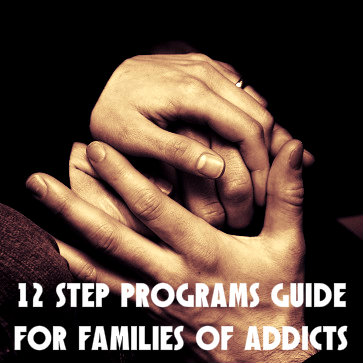 In most groups, members attend meetings regularly, read and study program literature, call and meet with other addicts or members in recovery and work regularly with a sponsor. Service to other addicts is of highest importance and seen as one of the keys to maintaining lasting sobriety.
In most groups, members attend meetings regularly, read and study program literature, call and meet with other addicts or members in recovery and work regularly with a sponsor. Service to other addicts is of highest importance and seen as one of the keys to maintaining lasting sobriety.
Aren’t 12 Step Programs A Little Overzealous?
It would appear that way to the outsider but, quite frankly, addiction is a little overzealous. For the non-addict it may be hard to fathom the prison and the punishment of being under the lash of a life-controlling addiction. As addicts, we have been so dominated by this cruel taskmaster that when we finally hit bottom we become willing to do whatever promises to rescue us.
And that proves to be quite a lot, as we soon find out once we’re in recovery. We believe that a powerful disease requires a powerful solution. In recovery we have to work as hard as the disease was working against us. But after a few years of sobriety many addicts come to see the program as the “easier, softer way,” when compared to the tyranny of addiction. When families see the beneficial results of program membership in their addict loved one, they too often become 12 Step supporters.
What Are The Roles Of Addict’s Loved Ones?
This will, to some degree, depend upon your relationship to the addict. For some recovering addicts, recovery needs to be a personal and private journey. They may not feel comfortable bringing others into their process, at least not in the beginning when they are yet fragile and convalescing. Don’t be offended by this; it isn’t personal. Recovery requires a lot of emotional work and some of us find we can better focus in the company of our program fellows, and perhaps apart from friends and family. Giving the addict the space he or she needs to heal can help to later guarantee closer relationships all around. Patience is needed.
It is wise, however, for the family of an addict to attend Al-Anon to learn more about the disease and how to deal with it. A family member’s addiction leaves scars on everyone. In Al-Anon you will come to better understand addiction, recovery and the 12-Step approach in addition to getting the support you need in healing from the wounds of addiction.
Read More On How 12 Step Programs Are Greatly Benefiting Teens
12 Nov 2013
Jimmy Choo Co-Founder, Tamara Mellon’s Personal Story On Addiction, Sobriety And Success
It’s easy to fall into the trap of thinking that substance addiction is an endless cycle that determines a person’s future. However, the reality paints a much brighter picture. For many, the act of conquering addiction is only the first step toward a happy and successful life. A recent example of this is the success story of Jimmy Choo founder Tamara Mellon, which illustrates the limitless possibilities of an addict’s life after overcoming addiction.
Tamara Mellon’s Rise From Rock Bottom

Courtesy of: luxsure.com
In her recently published memoir, “In My Shoes,” shoe fashion diva Mellon speaks openly and candidly about her troubled childhood, reckless partying and subsequent substance abuse that ruled much of her early life and career. Mellon was your classic binge drinker who suffered from a cocaine addiction. “One glass of red wine would turn into … calling my coke dealer at 6:00 in the morning” Mellon reports in an NBC Today interview. And as a member of London’s social-elite, Tamara had too-easy access to the club scene that fostered her habits.
Everything shifted in the span of only a couple of days, however, when Mellon was suddenly fired from her job at Vogue magazine and soon after urged by a friend to seek treatment (that moment was the first time, Mellon admits, that she realized that she had a substance abuse problem). The editor’s decision to fire her, Mellon explains, helped set “forces in motion that, in time, would lead to success far beyond anything I could ever have imagined.” Mellon’s recovery is a rocky one, as outlined in her memoir, but she manages to conquer it, a move that led her to develop the influential and extremely successful Jimmy Choo designer shoe label that led her to the top of the fashion industry.
History On Jimmy Choo
Founded in 1996, the J. Choo Limited label has become synonymous with the height of London’s fashion scene. It began as a partnership between Mellon, who focused on developing the brand since leaving rehab, and Jimmy Choo, a shoe designer and cobbler who made his living making shoes for celebrities and royalty, including Princess Diana. With the financial help of her father, Tom Yeardye, Mellon forged a partnership with Choo and launched the shoe line. It’s worth noting that while the line is named after Jimmy Choo, the shoes themselves were made—not designed—by him, but rather designed by Mellon herself and Choo’s niece, Sandra Choi.
Currently, the Jimmy Choo line is considered to be a shoe empire worth just under $1 billion U.S. dollars, with over 100 boutique shops in 32 different countries. The J. Choo Limited designer shoes have made appearances in Hollywood on the red carpet and on screen, including the hit show “Sex and the City.”
Jimmy Choo himself, whom the company is named after, was bought out in spring of 2001 by Equinox Luxury Holdings Ltd. And while Mellon stayed with the company for another decade, she too left in 2011 to start another shoe label, this time under her own name “Tamara Mellon.” Today, J. Choo Limited is operated by chief creative officer Sandra Choi, Jimmy Choo’s niece and former apprentice.
Mellon’s Family Struggle With Alcoholism
As is the case with many people, Mellon’s substance abuse and addiction began at home. Born and reared in London’s upper-class society, Mellon still describes much of her upbringing as “anything but glamorous.” In her memoir, Mellon reports that her mother was a “raging alcoholic,” prone to fits of rage and, like most alcoholics, displayed unpredictable behavior.
The pattern of drug abuse and addiction often runs in families, regardless of their social status, and Mellon is a good example of this. Parents play a central role in their children’s lives, and by extension, their substance addictions do too. In fact, the American Academy of Child and Adolescent Psychiatry (AACAP) reports that children of alcoholics are more than four times as likely to become alcoholics themselves as children of sober parents. Numerous factors play into this, including a greater chance of experiencing neglect or physical abuse (abuse that Mellon experienced firsthand as a young child), and a greater chance of developing emotional problems, including depression, aggression and isolation. In addition, the shame and denial of alcoholism often prevents parents from confronting their children when they begin to abuse drugs themselves.
Like with many of Mellon’s personal and business actions, the publishing of “In My Shoes,” as well as the launch of the Tamara Mellon line, is surrounded by controversy. Some accuse her of sensationalism, while others cast doubt on her ability to build another shoe empire. Mellon however, remains unfazed; after all, she has already faced and conquered the demon of substance addiction—a huge accomplishment on its own. There is no doubt, however, that Mellon’s life is a real success story, and her success and zest for life is due, she says, to overcoming everything that life has thrown at her.
Says Mellon: “I fought my way through the rites of passage.”
My story of addiction and recovery is the story of a near miss and an incredibly lucky break. Therapists talk about resilience and protective factors (as opposed to risk factors)—well, I had a boatload of risk factors but somehow I was able to muster some reserves, survive and ultimately thrive.
My story begins when I woke up from a blackout and realized that I had been raped. I remember drinking the night before, but I don’t remember anything from about halfway through the night until the next morning. The other people at the party helped me piece it together—what they saw and heard plus what I felt and what it all added up to. I was 13 years old and was already drinking myself into blackouts. The boy who raped me said he didn’t remember it either. He was only 14.
Within a year I was raped again, this time by an adult—the father of the child for whom I babysat. He was drunk. He was driving me home from babysitting his infant daughter, and made a wrong turn. I knew what was coming and just braced myself for it. I never told anyone.
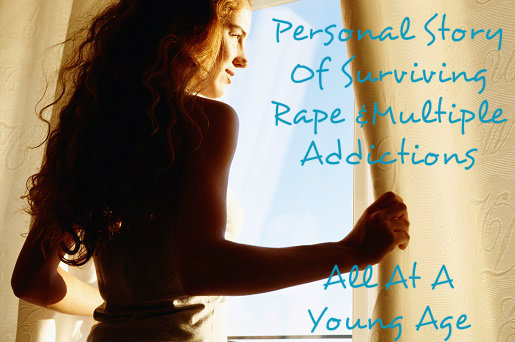
Stopping One Addiction And Dangerously Starting Several Others
I stopped drinking but I didn’t stop trying to drown. I smoked marijuana, ate Quaaludes, black beauties, and pink footballs; I snorted cocaine, and eventually snorted heroin. I dated a dealer, and did anything I was handed, no questions asked. It came to me one day, an epiphany of sorts: I realized that if I continued to live the way I had been living that I would die. I had stopped short of using needles, but snorting coke and heroin wasn’t getting me high anymore. I had to escalate again, or get clean, or face the reality that life as a heroin addict-garbage head was likely going to kill me.
A mental health professional had said to me that women with my history end up either dead or in prostitution. For a 15-year-old, this was a pretty heavy realization. I wanted to talk with my mom about it, but when I asked her to talk with me later that day, she said no. I pressed her, telling her that I needed her to listen to me. “No,” she said, “I can’t listen to you.”
Pain, Molestation And Addiction At A Young Age
So maybe my story doesn’t begin at age 13 in a blackout after all. If by age 15 my mom couldn’t tolerate listening to me, obviously a whole lot more was going on and had been for some time. I started drinking when I was 12. I wasn’t the only seventh-grader who was drinking, but I was likely the only one who was drinking to deal with flashbacks.
Backing up another year, things had happened that I still struggle to name. Rape is too simple and it conjures up the wrong set of images. Incest is too familial and can’t capture the way it feels when it is your teacher. Yes, my teacher, my sixth-grade teacher.
There aren’t words for what he did; there are sentences. He was a pedophile, and he groomed me for months, setting me up to be in a position where I wouldn’t say no and I wouldn’t tell anyone. He betrayed my trust and he took my childhood at age 11. I loved him and he said he loved me. It was truly confounding. It went on for months, my lies to my mom about where I went after school, my first lies ever to anyone.
It was Lolita, so I’m told—a novel that no matter how wonderfully written it may be, I have never been able to read it. At the end of the school year, he disappeared. Eventually I told a friend, and she told my mom. Police were called, school officials informed. I was interviewed, and then interviewed again by a special police “verifier” to determine whether I was making it all up. I wasn’t.
Choosing Life And Healing In Recovery Over A Life Of Pain And Addiction
After spending the next few years trying to not feel anything, and then choosing to live instead of die, recovery was a very long and difficult road. Not drinking or drugging was relatively easy. Figuring out what to do with all those feelings and how to get my needs met in healthy ways was the real recovery. It took years of therapy, and a passionate will to “be better”—to not only stop trying to kill myself, but to actually enjoy living.
For a while, pursuing some sort of healing was a full-time endeavor. I chased healing and recovery, stalked it, pursued it relentlessly. I was vulnerable to healers of every make and model, and spent money I shouldn’t have spent and time I didn’t have seeking healing.
While I learned a ton and all of it was useful at some level, I think the critical moments were back in my teens when I chose—consciously chose—to live and to live well. I had no idea how I would make that happen, but it was adolescent spunk and contrariness that fueled my strength. Mom won’t listen to me? I’ll show her. In fact, a decent amount of “I’ll show her” propelled me forward through the hardest times. During that critical and vulnerable time, the anger and the desire to show my mom that I would get through this without her help was probably the single biggest protective factor I had going for me.
Reconciliation With Self And Family
Mom and I are reconciled now. We rarely talk about what happened—it is still a sore subject for both of us. Her pain at failing to protect me from a predator is a wound from which she’s had to heal. The rough ride through my teens is something I’ve had to move past—not easy when I was invited to witness teenage years all over again, ringside, as my daughter grew up. Now she is 19 and more whole and healthy than I think I ever have been, and while I can’t take credit, at least I can say with some relief—my past did not infect her.
At some point in my 40s, I stopped chasing down healing. Not that I declared myself finished with that project, but more to the point I realized that no one is ever fully finished. I am back on a level playing field. The challenges that were tossed in my path when I was young no longer haunt me and I am truly happy with my life. I’ve been through a few dark tunnels, and who knows, maybe more will come my way. But for now, for today, I can feel all I feel and deal with whatever comes my way. Life isn’t perfect, but it is good enough.
07 Oct 2013
Naltrexone Limits Drug Cravings, Urges
It can feel overwhelming to make the necessary decisions regarding drug rehab treatment. You likely have many questions, from how long treatment will last to whether rehab will work. One of the decisions you may need to make is whether the medication naltrexone is the right therapy for you or an addicted loved one.
Naltrexone is a prescription drug used to treat both alcoholism and opioid addiction. Common brand names include Depade and ReVia. A once-a-month injectable form, called Vivitrol, is also available. This drug is often prescribed for a period of time ranging from a few months to a year. It may also be prescribed if a recovering drug addict starts experiencing cravings again or will be exposed to an environment where the urge to use will be intense.
How Naltrexone Helps Drug Cravings
Opioids, like heroin, oxycodone and hydrocodone, are drugs that slow the body’s central nervous system activity and induce feelings of pleasure. Naltrexone is an opioid receptor antagonist, which blocks the effects these drugs have on the brain. In other words, the drug takes away the intense high. The medication does not stop a person from doing drugs when he or she is actively using. It also will not stop or relieve withdrawal symptoms. However, its ability to block the euphoric high makes substance abuse less attractive to the addict.
Some studies have shown naltrexone to be effective at helping addicts prevent relapse. However, it’s important to note that the medication was used in conjunction with other addiction treatments, including cognitive behavioral therapy. In one study, naltrexone was combined with counseling and addiction education for significant others to increase the addicts’ success rates.
Naltrexone is sometimes used in a process called rapid detoxification, which, as the name implies, is a method of speeding up detox. This must be done under strict medical supervision due to the risks involved. It is performed while the addict is under general anesthesia or sedation.
Before Taking Naltrexone
The drug’s primary use, however, is to prevent recovering addicts from experiencing the high that reinforces their continued use. This effective drug rehab treatment medication cannot be taken if a person is still using opioid drugs. As a general rule, an addict needs to be clean for at least seven to 10 days before starting naltrexone therapy. It’s common for the prescribing physician to order blood tests to ensure that there’s been no recent drug use.
Before taking this medication, addicts must go through detoxification if they haven’t already stopped using. Once they are clear of opioids, a physician will prescribe a low dose that will then be adjusted as necessary. Naltrexone should be taken on the prescribed schedule: daily, every other day, or every third day. It is often delivered in a clinical setting, but some addicts may be able to take it at home if supervised by a responsible family member.
Like any prescription medication, naltrexone does carry the risk of side effects. Most of the potential side effects are relatively mild. Users have reported headaches, drowsiness, upset stomach, vomiting, diarrhea and muscle aches. The prescribing physician will provide a complete list of side effects and may be able to offer tips for reducing them. Naltrexone should not be taken by those with liver disease, acute hepatitis, or kidney disease, or women who are pregnant or breastfeeding.
Because this medication for drug addiction prevents opioids from working, it’s important to let your physician and any other health care providers know that you cannot take any opioid-containing medications. These include certain pain medicines, diarrhea medications and cough syrups.
Disadvantages of Naltrexone
While naltrexone can be an effective tool for drug rehab treatment, there are drawbacks. For instance, it works only when taken exactly as prescribed. Addicts with the urge to use often stop taking the drug or skip doses so they can use again. Others forget to take it. One study showed that heroin addicts who were supervised almost daily while taking the medication had better recovery rates than those who were supervised only three or four days a week.
Some addicts are hesitant to take it because they prefer to be entirely drug free. However, it’s important to remember that naltrexone is not a narcotic; nor is it a drug substitute therapy, like methadone. You can’t become addicted to naltrexone or get high from it. Using this medication is much like using a prescription to control other chronic disorders, such as diabetes or high cholesterol.
There’s another potential danger linked to the use of naltrexone. Since the drug blocks the high that comes from opioid drugs, some addicts may try to “get around” the medication and attempt to get high by taking larger-than-typical hits of their drug of choice. This is extremely dangerous because it can lead to overdose and, potentially, death.
Naltrexone And Addiction Treatment
This use of naltrexone as part of drug rehab treatment is not a magical cure; it can’t eliminate your addiction by itself. Rather, it’s just one more tool in a long-term strategy for recovery. Think of this medication as a way to clear your mind so you can build the healthy physical, emotional and cognitive foundation needed to maintain an addiction-free life.
As part of your treatment, you will be required to participate in individual or group addiction counseling. A trained therapist will help identify the factors that have contributed to your addictive behavior. Once those triggers are established, you will work to find healthier ways to cope with those emotions and behaviors.
Addiction professionals may recommend other tools as well. A support group, often in the form of a 12-step program, can be a powerful treatment strategy. By working with others who have experienced the same struggles, you will learn new ways to maintain recovery. Just as importantly, a good support group provides connections with others who understand exactly the challenges you are experiencing.
Finding support from family and friends is also crucial to recovery. Your addiction treatment team may recommend family or couples therapy to address relationship issues that contribute to your drug abuse. You’ll learn to identify sources of conflict as well as develop strategies for resolving them in a healthy and constructive way.
Naltrexone can be one part of a successful drug rehab treatment strategy. Talk to an addictions specialist to determine if this medication will help you on your road to recovery. It may be the extra tool you need to build a life free from the strain and dangers of addiction.
In order to fully and accurately evaluate the global impact of various diseases and harmful health conditions, researchers in the United States and Australia analyzed extensive medical data collected from more than 180 countries representing every geographical region on the planet. Working under the auspices of the 2010 Global Burden of Diseases, Injuries and Risk Factors Study, these investigators were able to compare and contrast a wide range of medical conditions, and after crunching all of the numbers, they discovered that mental health and substance use disorders are now the world’s leading cause of non-fatal disease.
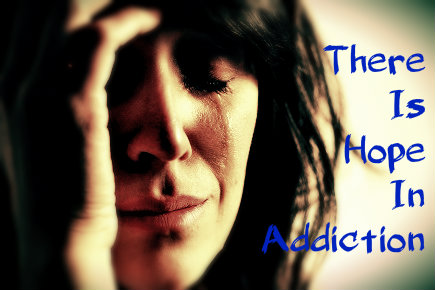 For the purposes of this study, 20 different conditions were categorized under the mental health and substance use disorder umbrella, including depression, drug and alcohol abuse, idiopathic intellectual disabilities, and all known anxiety, childhood behavior, and pervasive development disorders. A study such as this would have been difficult to perform in the past since legitimate statistics on mental health disorders were often sparse or non-existent, especially in the developing world, but, fortunately, global awareness about mental illness has grown to the point where these conditions are now being recognized and diagnosed everywhere with much greater accuracy.
For the purposes of this study, 20 different conditions were categorized under the mental health and substance use disorder umbrella, including depression, drug and alcohol abuse, idiopathic intellectual disabilities, and all known anxiety, childhood behavior, and pervasive development disorders. A study such as this would have been difficult to perform in the past since legitimate statistics on mental health disorders were often sparse or non-existent, especially in the developing world, but, fortunately, global awareness about mental illness has grown to the point where these conditions are now being recognized and diagnosed everywhere with much greater accuracy.
A Closer Look At Mental Health And Substance Abuse
In total, the conditions grouped together under the mental health and substance use disorder classification accounted for 22.8 percent of the global non-fatal disease burden, making them a greater factor for serious illness than such highly-publicized health problems as HIV/AIDS, diabetes and tuberculosis.
Breaking that 22.8 percent down into specific conditions, depressive disorders are easily the most common type of mental health problem experienced, accounting for 40.5 percent of all of the incidences reported. This means that depression alone is responsible for more than 10 percent of the global burden of non-lethal disease.
Next in line in frequency of diagnosis within the mental health/substance abuse group are:
- Drug and Alcohol Addiction (20.5 percent)
- Anxiety Disorders (14.6 percent)
- Schizophrenia (7.4 percent)
- Bipolar Disorder (7.0 percent)
- Pervasive Developmental Disorders (4.2 percent)
- Childhood Behavioral Disorders (3.4 percent)
- Eating Disorders (1.2 percent)
When the statistics for fatal and non-fatal illnesses are combined, mental health and substance use disorders are the fifth leading cause of death or serious disease across the globe. Naturally the incidence of specific mental conditions plus drug and alcohol addiction varies by geographical location, but there is no country or region of the world where common mental health problems and substance use issues are unheard of or insignificant in their levels of occurrence. The incidence of all mental health problems is higher in women and girls than in men and boys, but the inverse is true with respect to substance abuse.
Mental Health – Global Problems And Individual Solutions
While global statistics on mental health troubles and drug and alcohol addiction provide a useful overview of the situation, ultimately each individual nation-state will be forced to deal with the consequences of these conditions largely on its own. And unfortunately, in every single country, mental illness and substance abuse are placing significant financial and personnel burdens on health care systems that are already chronically undermanned and/or underfunded. In the developing world, shortages of trained medical professionals who are capable of providing effective and efficient mental treatment services are a constant problem, while in both developing and developed nation the high cost of treatment and rehabilitation often prevents suffering people from getting the attention and assistance they so desperately need. Complicating the picture further is that mental illness still too often goes undiagnosed, most frequently among the poor, and, in the case of substance abuse, even when individuals do manage to get treatment, the failure rate of this type of rehabilitation is discouragingly high.
In the past, mental illness carried a stigma that tended to prevent suffering people from coming forward and asking for help, or from admitting that they had a problem in the first place. Fortunately this situation has changed and changed dramatically, and that provides great reason for optimism and hope. Financial challenges that restrict the availability of quality mental health care for all are real and pervasive; however, as awareness of the depth of the problem of mental illness and substance abuse continues to spread, government agencies and public health officials in nations all across the planet will have little choice but to acknowledge reality and bring their funding priorities into line with the real needs of their citizens.
The question of how we should deal with people with the brain disease of addiction isn’t an easy one. The criminalized approach, which would have drug users sitting in jail cells across the country and offers little in the way of medical help, has had its time in the sun. Putting people in jail accomplishes very little, with soaring re-arrest rates for drug crimes testament to the fact that merely punitive action is not enough to deal with the nation’s drug problem. This is the key idea behind drug courts — they aim to help drug users solve problems and get into treatment, rather than sending them straight to jail. Graduates of drug courts, like Melissa Swanger and Kathleen C., often become advocates for the approach, a testament to their ability to turn people’s lives around.
Introduction to Drug Courts
Drug courts are specialized courts for those addicted to drugs or alcohol. Rather than send people with recognized illnesses to jail over and over again, drug courts use a multi-pronged approach with the aim of reducing the chances of both relapse and re-arrest. They do this through interactions with a judge, treatment and rehabilitation services, monitoring, supervision, sanctions and incentives, all offered according to the individual’s requirements as determined by an initial risk and needs assessment. There are consequences for failure, however; if the individual continually relapses or commits crimes, the system effectively reverts to the ordinary, incarceration-based approach.
Melissa and Kathleen’s Stories
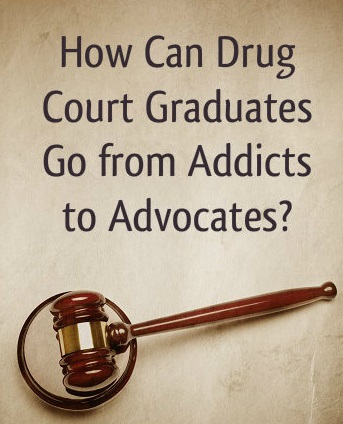 Melissa Swanger had no criminal record until she started using meth. Her goal was to lose weight, but in addition to the 60 to 70 pounds, she lost a lot more, including her home, her car and her children as a result of her addiction. Because there was no indication she was a criminal before she began taking meth, her lawyers pointed her in the direction of the local drug court. Eight years after her entry into drug courts (and seven after her graduation) she is still clean, having made a lasting change in her life, rebuilt relationships and taken responsibility for her actions. She called it “the toughest blessing I’ve ever had,” and went on to comment how the drug court team is “willing to help people instead of saying just throw away the key.” The approach worked wonders for her, and she’s never looked back.
Melissa Swanger had no criminal record until she started using meth. Her goal was to lose weight, but in addition to the 60 to 70 pounds, she lost a lot more, including her home, her car and her children as a result of her addiction. Because there was no indication she was a criminal before she began taking meth, her lawyers pointed her in the direction of the local drug court. Eight years after her entry into drug courts (and seven after her graduation) she is still clean, having made a lasting change in her life, rebuilt relationships and taken responsibility for her actions. She called it “the toughest blessing I’ve ever had,” and went on to comment how the drug court team is “willing to help people instead of saying just throw away the key.” The approach worked wonders for her, and she’s never looked back.
Another story comes from Kathleen C., a mother who found herself committing crimes in order to fund her habit—which graduated from prescription drugs to heroin and meth—so she could use at all hours of the day. She started getting high at work and lost two jobs over the course of her addiction so that eventually she was only working “seasonally” so that employers didn’t catch on to her issues. Eventually, she was arrested for theft and forgery, a moment that became her turning point. After her three-month stretch, she asked to be sent to a drug court. Since then, she’s been clean, graduating in 2012 and managing to repair her relationship with her son. She fought the program at the beginning, but soon realized it was what she needed to overcome her addiction. Since graduating she has gotten engaged and has gained an associate’s degree in applied sciences. She says, “there’s a lot of beautiful things in my life today that I wouldn’t have thought possible.”
Becoming Advocates
After finishing the program, Melissa and Kathleen have become advocates for the drug courts approach. Melissa has become a recovery group leader with a church and tells her own story to inspire others to make a change. The passion the recent graduates show for the program is a testament to its ability to change lives, and the advocates it produces may lead others to make similar decisions to improve their day-to-day existence.
Punishment for Addiction: A Thing of the Past?
The drug court approach seems to be proving that the traditional, punishment-based strategy for dealing with addiction is fundamentally flawed, but not everybody shares the enthusiasm of recent graduates. There are stories of those for whom drug courts did not work, as well as critiques from groups like the Drug Policy Alliance, who argue that drug courts are not cost-effective and leave some people worse off than when they started and that the approach is more punitive than the previous method. This is because they punish users for relapsing, generally with jail time and ejection from the program, with harsher sentences for those who’ve been deemed “failures” in their attempts to get clean. However, whether this is an issue with drug courts as a concept or with how they’re put into practice is unclear.
On the other hand, the National Institute of Justice offers statistics indicating that drug courts are effective at reducing costs to the justice system (an average of $1,400 cheaper per participant) and reducing rates of re-arrest by up to 28 percent over the course of two years. The Drug Policy Alliance alleges that these studies are poorly conducted and often focus on less serious cases, but don’t deny the effectiveness of the approach for some users.
It’s unclear whether drug courts really are as effective as they’re reputed to be, but with the alternative being jail time with no real assistance in getting clean—they must be a step in the right direction. Perhaps a more health-centered approach would be even better, but these types of moves must be made gradually. Maybe, just maybe, the days of punishing people for a health problem are coming to an end.
Daphne sat across the table from her husband and mouthed the words, “I hate you.” Then she painted a charming smile on her face and ordered a salad. She and Sam were out to dinner with his family, something they did only rarely because of what Sam’s mother referred to as “Daphne’s drinking problem.” What no one at the table knew was that Daphne had a gram of cocaine in her clutch and no plans to drink more than one cocktail. To everyone’s surprise, a single margarita is all she had that night.
For the next four weeks, Daphne’s behavior was erratic. She didn’t find herself sneaking bottles of wine or vodka, passed out on the sofa in front of the television or lying in the floor of their shared walk-in closet, crying her eyes out over every conceivable wrong done to her in the past. Instead, she was scarce, hardly ever at home. When he did see her, she was wild with energy and ideas, frenetic to dress and shower and be off again. Her already thin frame appeared unusually slight. It didn’t look as though Daphne had been eating, or really doing anything but moving, fast.
Then on a Sunday afternoon, just like it had started, Daphne was suddenly home again—collapsed on the lawn, so drunk Sam could nearly smell the alcohol from the front door. Ever the co-dependent faithful partner, he walked to his wife and bent to scoop her into his arms. And just like clockwork, Daphne began to slur a litany of praise for her husband, how she could not live without him, how he was perfect in every way.
Days into Daphne’s return, however, she was threatening to stab herself with a kitchen knife if Sam didn’t give her access to all of her pain medication. Daphne received prescription opiates for a cracked cervical vertebra, and Sam sometimes hid them when Daphne’s drinking binges got especially bad. When she took the knife and started carving shallow cuts into the inside of her arm—something Daphne had done many times before, but always in private—Sam knew it was time to do what he had not yet done. He had his wife involuntarily hospitalized. An emergency hospital stay turned into a longer, voluntary in-patient psychiatric stay, and it was there that Daphne was formally diagnosed.
She was an alcoholic. She was a drug addict. She had anorexia. She had bipolar disorder. And she had borderline personality disorder. No one had expected this outcome, least of all Daphne.
Mental Disorders and Addiction
When a person has both a problem with addiction and a mental disorder, he or she is said to have a dual diagnosis (or comorbidity). Many times, substance abuse can mask the signs of mental illness. Traits or characteristics of mental illness, which may otherwise be quite noticeable to close family members and loved ones, cloak themselves in the depressed behavior brought on by excessive alcohol use (alcohol is itself a depressant), or the erratic behavior others exhibit whether using alcohol excessively or when high or seeking drugs.
People with certain mental disorders may seek to “self-medicate” the anxiety or depression that arises as a result of the disorder by consuming alcohol or using drugs, or a combination. One such disorder is bipolar disorder. About 56 percent of people with bipolar have experienced drug or alcohol addiction. The personality disorders, such as borderline personality disorder (BPD), also share a high rate of dual diagnosis. According to the Center for Drug and Alcohol Programs at the Medical University of South Carolina, “Over 50 percent of drug abusers and almost 40 percent of alcoholics have at least one serious mental illness.”
Besides bipolar and BPD, depression, anxiety disorders, schizophrenia and other personality disorders frequently co-occur with substance abuse. Psychiatric issues can begin before or after the onset of substance abuse.
Treatment for the Dual Diagnosed
There is no question that adding disorders and substance issues to the mix significantly compounds an individual’s stress and further complicates treatment options. Those who have co-occurring mental disorders have a higher rate of relapse when it comes to getting sober. But even people with mental disorders and co-occurring substance abuse issues can begin to heal. What helps is an integrated therapeutic approach—where mental health treatment and addiction recovery are not thought of as separate, but fused into an integrated whole. Compartmentalizing too many areas of her life is often how an addict with mental health issues gets to the place in which she desperately needs recovery, so seeing her life as a working whole is important.
Thinking, “I cannot attend to my sobriety if I do not attend to my bipolar disorder” and vice versa is a good way to think about it. It’s quite true, in fact—not simply a bromide offered by practiced faces in the business of therapy.
While Daphne’s situation may seem extreme, it is likely that the deeper part of her issues are connected. When she begins to do the work to unravel what the deeply held beliefs and long-held stories that most affect her mental state are, she may begin to find herself experiencing better balance—and an ability to deal with the boat-rocking experience of finding herself with a half-dozen labels, all too frightening to think about in the beginning.
Becoming educated about the nature of addiction and the reality of mental illness is a good place to start. Choosing to look at one’s life carefully is the opposite of what addiction means. When you wrestle the hydra of addiction and mental illness, you know you’re only going to get more of the same. Better not to go in swinging but with clarity, a willingness to learn and possibly, maybe, a little bit of room for something like hope.



